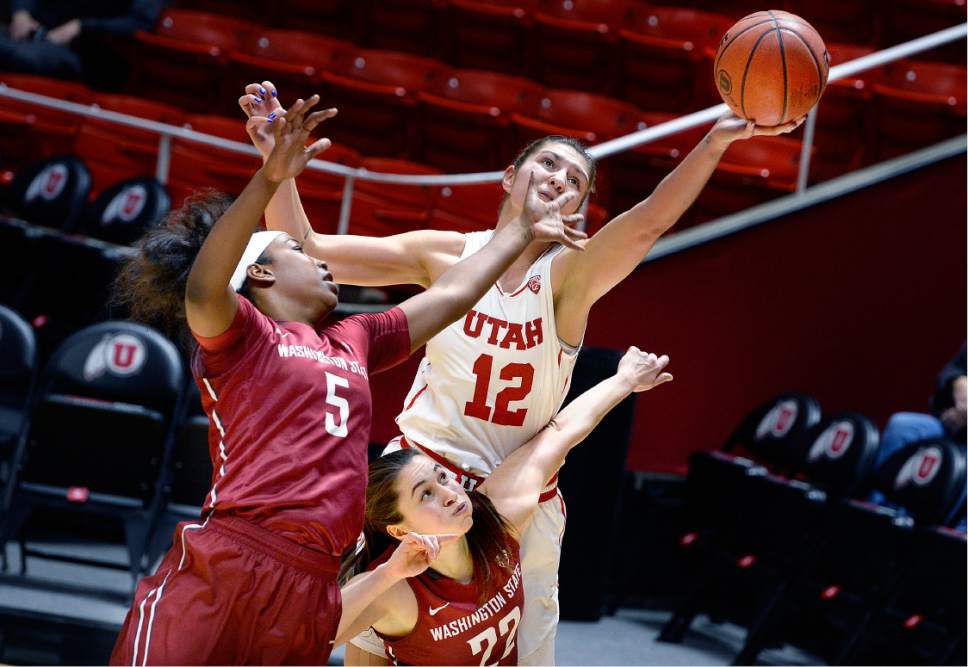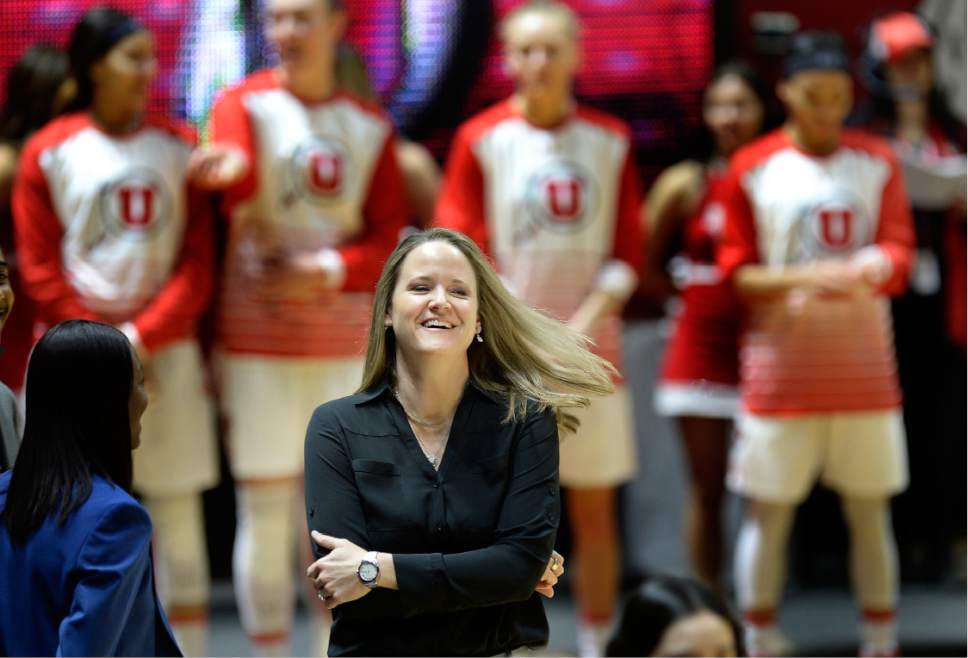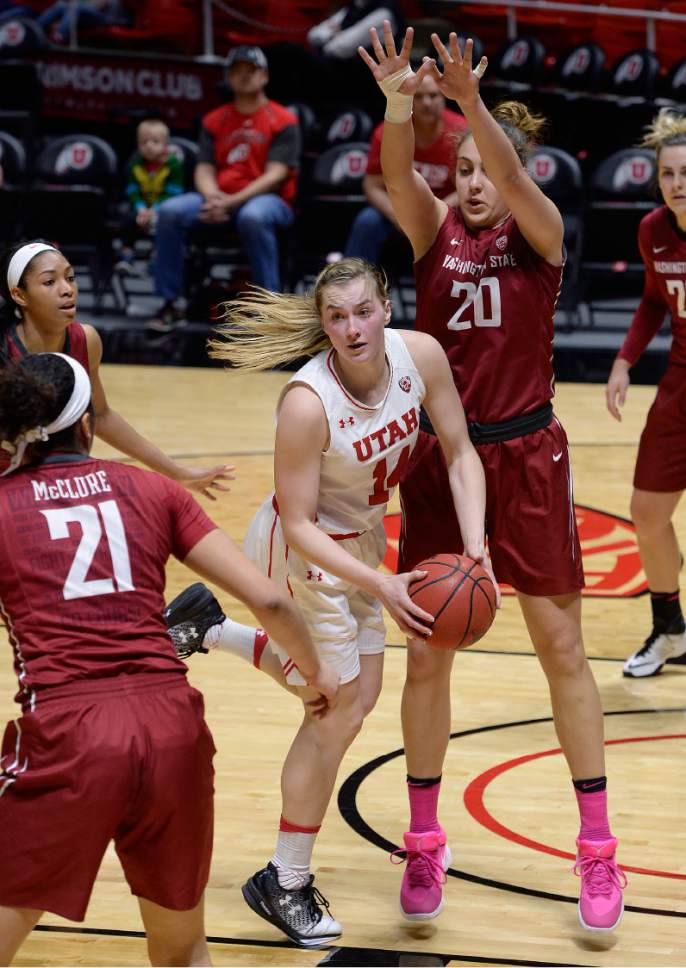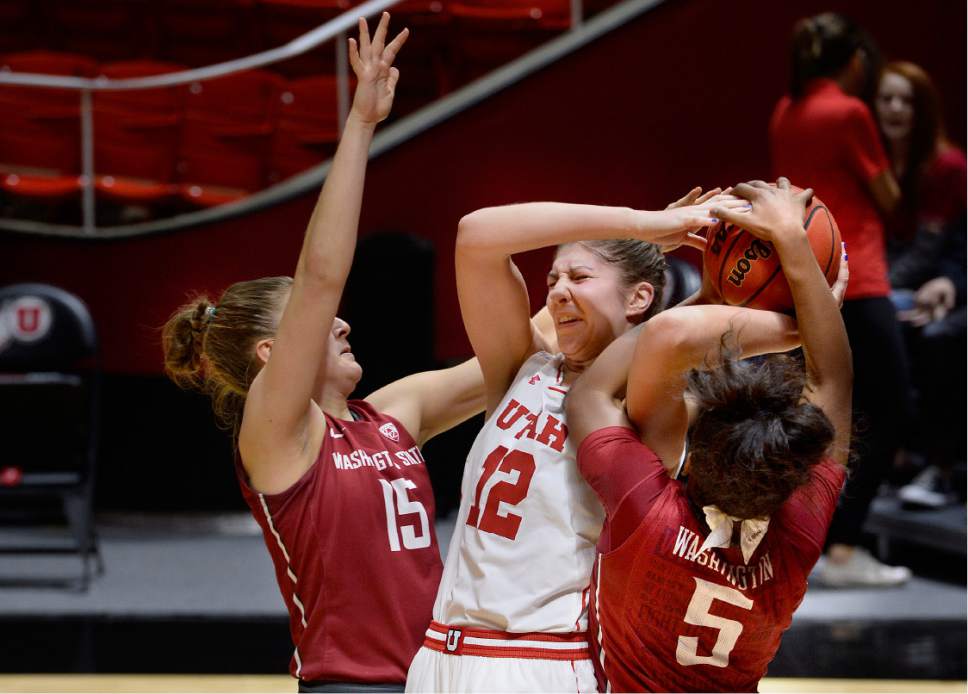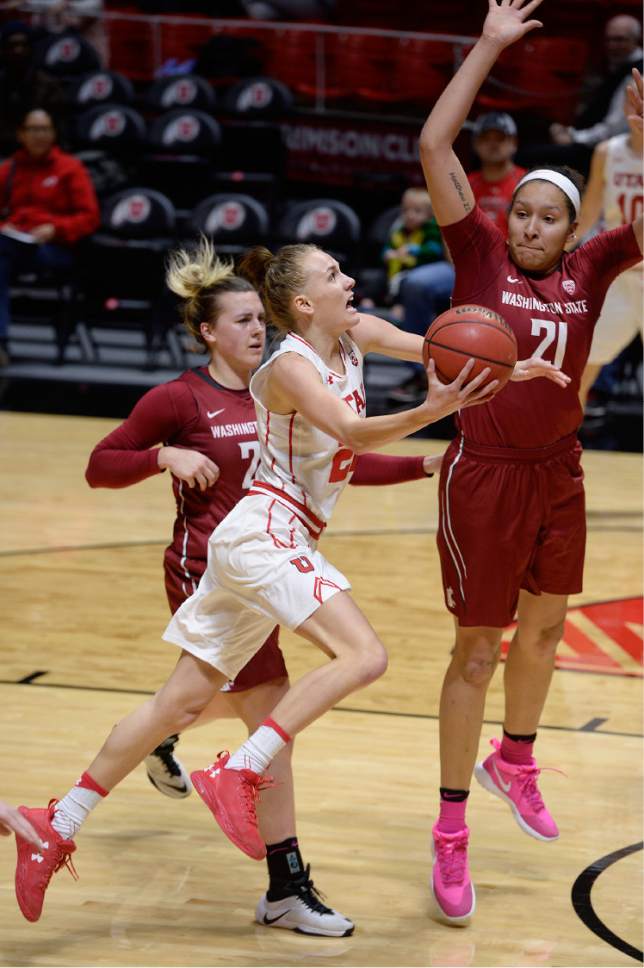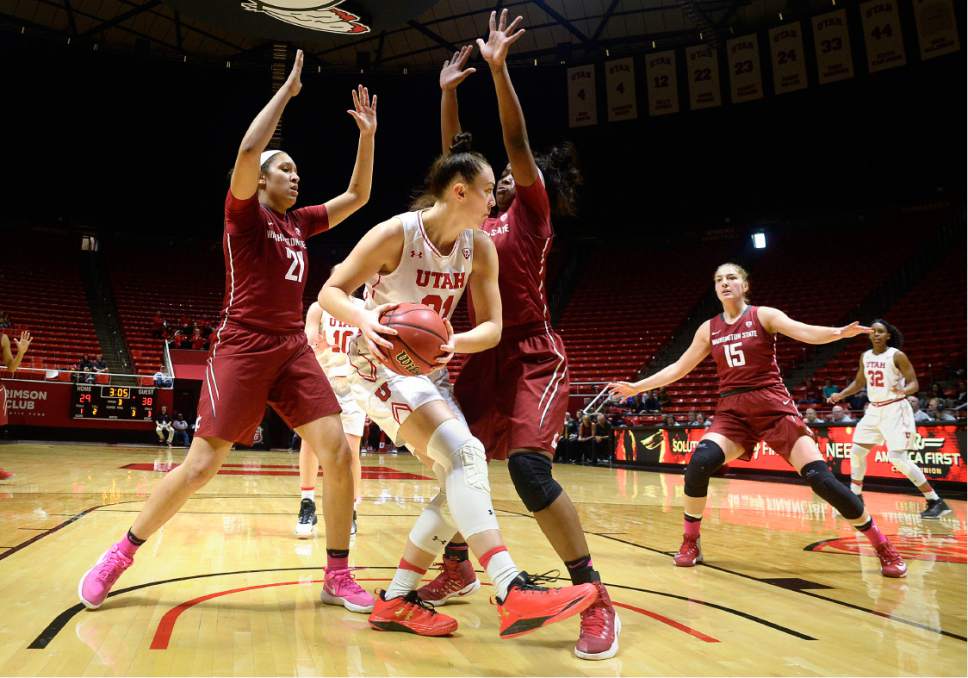This is an archived article that was published on sltrib.com in 2017, and information in the article may be outdated. It is provided only for personal research purposes and may not be reprinted.
Some problems can be tied to effort: subpar rebounding, lackadaisical defense or mindless turnovers among them.
But the problem Utah women's basketball is experiencing is hard to tackle: shooting.
At 14-9 this season, the Utes' 3-9 conference record can be almost directly tied to their struggles on offense. They're the last-place Pac-12 team in overall field goal percentage (39. 5 percent, No. 190 nationally) and from the 3-point line (25.3 percent, No. 334). Despite having high marks in rebounding (43.1 per game, No. 16), defense (36.2 percent, No. 33) and blocks (6.0 bpg, No. 11), Utah hasn't been able to capitalize thanks to its inability to convert shot attempts.
The struggle for coach Lynne Roberts and her team is this: It's not as if Utah doesn't practice shooting. It's not as though they haven't worked on it. So what happens when the shots don't go down?
"As a coach, I don't think there's a magic play," she said. "I think we can get creative and we've done a lot to get different people shots and get people moving. It's hard when we're not hitting outside shots consistently."
The big problem is a lack of an outside threat: Only Paige Crozon is hitting more than 30 percent among shooters who have taken at least 15 attempts from deep.
That creates congestion in the lane as defenses collapse on leading scorer Emily Potter (14.6 ppg) and make it tough for her to breathe, much less make a shot. It hasn't helped that fellow center Joeseta Fatuesi is out for the season with a knee injury.
In losing five of the team's last six games, Roberts has been motivated to shake up things: After using the same starters for the first 19 games of the season, she's had three different lineups in the last four games.
"You mix it up — let's see if this can get us rolling a little bit," she said. "It's always a bigger deal than I intend it to be, but win or lose, I want to conduct ourselves and establish ourselves in the culture we want going forward."
The second year, in some ways, has proved more challenging than the first. In a three-way tie at ninth place in the conference, Utah would have to make quite a run to match last year's 8-10 mark — especially with games remaining against the Pac-12's three top-10 teams, including No. 8 Stanford on Sunday.
It wasn't what Utah expected, not with so many returners from last year's WNIT team. But the conference has taken a step up with five ranked teams and it's that much harder to keep improving, Roberts said.
Still, the Utes believe that their shooting slump is merely that — a slump. If they start to hit a few shots in a row, maybe it would be enough to start to turn around their season.
Maybe.
"Scoring is contagious: If I go down and hit a 3-pointer, the next possession you go down and take it, you're going to be more comfortable and confident because I just made one," Roberts said. "Missing is also contagious. If I miss then you feel more pressure when you shoot. It's that simple and that's where the mental toughness and preparation comes in. The players want to be good and they want to get themselves out of it. There needs to be a game where it all falls together and we can stop talking about it."
Utah plays at Cal at 7 p.m. MST on Friday and at Stanford at 2 p.m. MST on Sunday. Both games will air on Pac-12 Networks.
kgoon@sltrib.com
Twitter: @kylegoon


